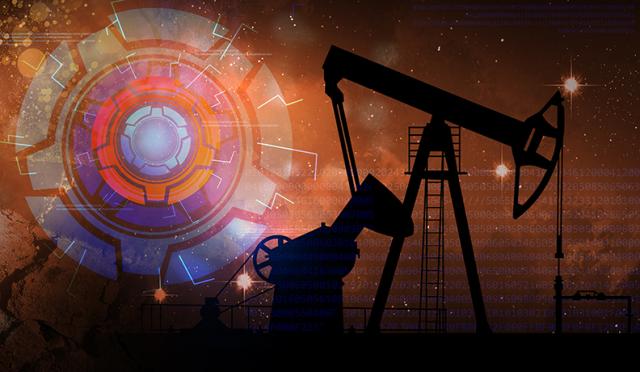
Think of the digital oil field as a weather analog. Everyone talks about it but, at the end of the day, little is done.
That may surprise anyone who has attended an industry conference lately or listened in on earnings calls where it seems talk is partially digital a lot of the time.
Certainly, there is a need. Between 2011 and 2016, publicly held E&Ps spent $1.40 for every $1in revenue, and overspent revenues by an average $9 billion quarterly. Meanwhile, a Moody’s Corp. study found oil and gas facing $340 billion in debt due within the next five years.
With Wall Street closing the financial spigot, getting to a cash-neutral spending model in oil and gas while providing dividends or stock buybacks will not be easy. High commodity prices make us feel smarter in oil and gas, so the impetus to avoid looking the gift horse of $75 oil in the mouth is understandable. Certainly, process improvement in drilling and completion has gotten the industry closer to sustainable free cash flow.
But commodity prices are inherently unpredictable—you might call them disruptive—and the industry overwhelmingly conflates best-n-class headline well performance with average well performance.
While process and pricing will help, the path to a financially sustainable fossil fuel industry is through digital evolution.
Talking to vendors, many of whom offer digital solutions that quickly pay out, the initial observation is: “Bet sales are going through the roof.” And that’s when the conversation changes. Sales, in fact, are slow, and the sales team spends time either evangelizing or educating customers about digital applications.
Why? Some of it is cultural. Vendors sport stovepipe pants, plaid shirts, which are seldom tucked in, beards and white-framed glasses. Rather than selling technology that, for example, eliminates a wireline procedure while providing more granular data that solves a specific cost and data issue, young, enthusiastic sales providers promote sexy terms such as artificial intelligence or machine learning to gray-haired customers whose digital frame of reference is a vague memory of children playing Super Mario Brothers during the holidays.
Few customers know or understand what artificial intelligence is (substitute the term predictive technology). Disruptive technology? That is not a motivating deal-closer in an industry where unexpected changes in commodity prices, usually to the worse, are the ultimate disruptive event.
Then there are institutional barriers. The industry and its proprietary mindset won’t pay for or share anonymized data that would benefit everyone. Early E&P digital pacesetters discuss proprietary apps and algorithms in contrast to Silicon Valley, where everything is open-sourced and evolves quickly. If each E&P has to develop its own digital technology, the digital oil field will evolve slowly as the rest of the business world outdistances the fossil fuel sector.
Meanwhile, the guys in the field don’t want digital technology. They know it eliminates jobs, whether directional drilling or the time-honored pumper in the company truck.
Additionally, engineers don’t trust it. Machine learning creates a black box of uncanny, workable correlations. But correlation is not causation. The engineer can’t lift the lid and see how the machine got from point A to point E. Furthermore, it’s not clear yet when to apply machine learning or when to just do basic math.
Meanwhile, the industry’s historical data is a mess and isn’t easy to clean up. Today, most E&Ps will find it easier to start from scratch rather than expend scarce human capital and resources attempting to normalize decades of incomplete data to fit into a new digital solution.
Finally, hiring a couple of data scientists and parking them in a side office in the reservoir engineering department won’t produce an oil and gas iPhone anytime soon. Google, Amazon, Apple, Facebook and all of Silicon Valley pay better and offer more exciting career arcs using open-source technologies than a junior position in a digitally reticent E&P.
These factors slow but don’t prevent the inevitable. The digital oil field will only arrive when pressure is applied from outside the industry, likely from the financial side.
Today, E&P CEOs pound the table first on extending drillable locations or buying back shares. You will know the digital oil field is near when you hear CEOs pounding the podium about their digital efforts first.
Recommended Reading
What's Affecting Oil Prices This Week? (May 6, 2024)
2024-05-06 - Stratas Advisors forecast that oil demand for 2024 will increase by 1.41 MMbbl/d in comparison to 2023 and that oil demand will increase by 810,000 bbl/d in comparison to 2Q23.
What's Affecting Oil Prices This Week? (May 13, 2024)
2024-05-13 - For 2024, increasing supply will be more challenging unless U.S. producers start ramping up their capex and drilling programs beyond their current plans.
What's Affecting Oil Prices This Week? (June 17, 2024)
2024-06-17 - For the upcoming week, Stratas Advisors expect that the price of Brent crude will test $84 and the price of WTI will test $80.
Paisie: OPEC+ Will Be Able to Manage Prices
2024-07-11 - Disappointing economic news has contributed to a drop in oil prices.
What's Affecting Oil Prices This Week? (June 10, 2024)
2024-06-10 - Stratas Advisors says the latest EIA report illustrates that U.S. production growth has stagnated with U.S. oil production remaining at 13.1 MMbbl/d, which is unchanged from the previous 12 weeks.





